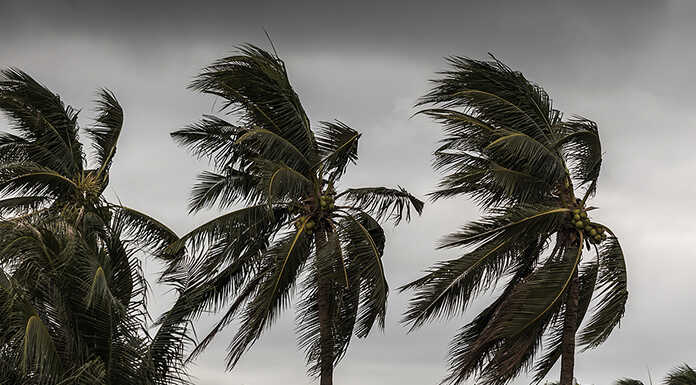Hurricanes can cause considerable disruption and damage. So far, we’ve had a busy season with more storm activity likely to come. Here are steps you can take to help you prepare your business before, during, and after the storm.
Before the Storm
Protect your employees and property by evaluating the worksite to identify any potential safety and health hazards before a storm.
Look for compromised and damaged structures, damaged or dying trees, ineffective drainage systems, unsafe chemical containment, items that could become projectiles, etc. Once you identify potential concerns, prioritize the repairs needed to make your property storm-ready.
To assist in keeping high winds from getting inside buildings, the last to leave before the storm should make sure all doors and windows are closed and secured, including those within the building. Perform a final inspection of the outside to verify no potential projectiles remain outside.
A great way to assist in protecting employees and property before a storm is to establish an emergency plan, which should include the following components:
- What to do and anticipate in the days leading up to a hurricane, including caring for those with disabilities, ensuring sufficient medications and supplies are on hand, etc.
- Download the FEMA app to receive real-time alerts from the National Weather Service so you are ready to put your preparedness plan into action.
- Identify evacuation routes and sufficient time for evacuation.
- Have the employees sign up for communications-related efforts to notify others of their respective experiences.
- Establish protocols for safely returning to work following the storm.
ICW Group’s Emergency Preparedness page on its Policyholder Center contains resources to help you plan.
Unfortunately, when hurricanes happen we often hear about those needing to be rescued and those who could not. When the National Weather Service and government agencies advise evacuation, best practice is to heed the advice and leave. No property is more valuable than a life – buildings can be replaced, but people cannot.
During the Storm
One way to assist in protecting employees and property during a hurricane is to remain out of the area. Just because the winds seem to die down does not mean the storm is over.
We often hear about those who check on their property or return to work when they believe “the worst is over,” only to be caught in the storm with no chance for rescue, electrocuted by downed power lines in standing water, etc.
Remember – Nothing in your home or workplace is more valuable than the safety and security of your family and you.
After the Storm
Once local authorities issue the “all clear” to return after the storm, the owner of the property or professional engineer should first inspect the buildings from the outside to identify any potential post-storm safety hazards such as structural damage.
If a building used to contain hazardous chemicals appears to have any damage, the local fire department should perform an inspection before entry. Once it’s determined safe to enter the buildings, the interior structural components should then be inspected, including the equipment, storage racks, and materials. Anything that could potentially collapse or fall onto workers should be inspected.
When clean-up involving building debris is required, it is best practice to have a licensed and insured contractor complete the efforts before employees return to the worksite. Contractors have the equipment specifically designed and capable of safely handling damaged metal, wood, glass, etc., and their employees have been trained to safely accomplish the efforts.
When employees perform final clean-up efforts, they should be furnished and required to wear the appropriate forms of personal protective equipment. Eye protection should be worn at all times, cut-resistant gloves should be worn while handling any sharp or jagged materials, and dust masks should be worn in dirty or dusty environments.
When power has not been restored following a storm, temporary power from generators is common practice. When generators are used, they should only be used in open, well-ventilated areas due to the hazards associated with carbon monoxide.
The bottom line
Before a hurricane, have the appropriate preparation efforts in place.
During the storm, maintain consistent communications with employees to make sure they are okay and no one believes they need to return to work.
After the storm, make sure to complete the appropriate efforts before communicating the “all safe” signal.
Hopefully, you will never experience a hurricane. However, carefully planning for a hurricane and following your established emergency plan should assist you in preventing a tragedy at your workplace.

















